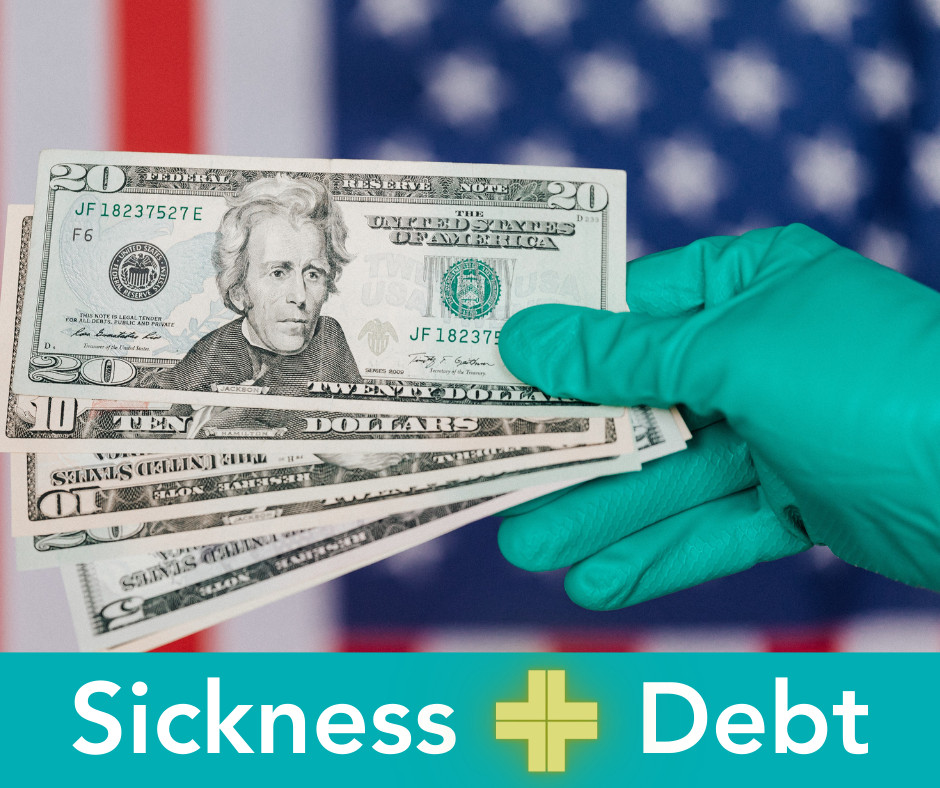
“The link between sickness and debt is a defining feature of American health care.”
A recent investigation by KHN and NPR incorporating data from Kaiser Family Foundation has revealed that the medical debt problem in America is even more toxic than previous studies reported. Here’s what you need to know.
41% of American adults are experiencing medical debt right now.
That debt may include past due bills, a payment plan with a health provider, owing a loan to a bank or personal contact, or paying off a credit card. Many of these categories have not been adequately considered in previous medical debt studies, which is just one reason why this new study is so eye-opening.
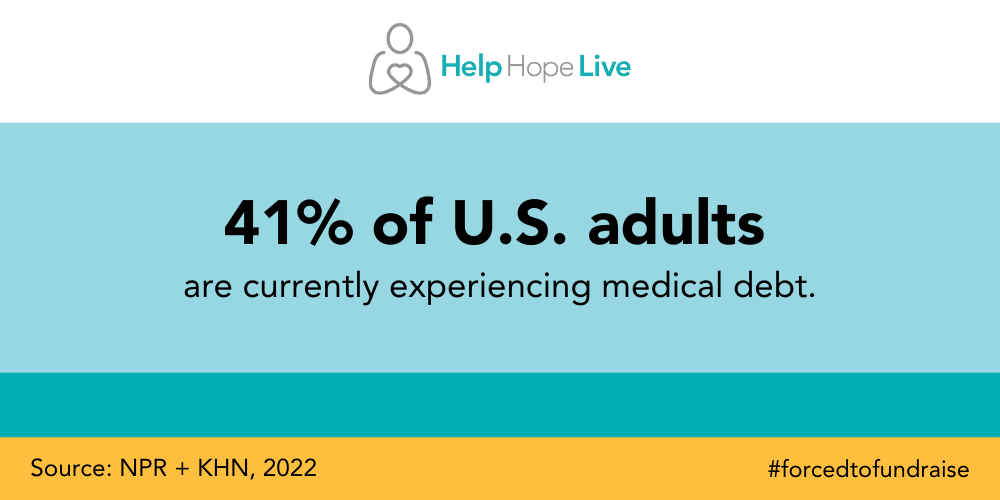
50% of adults have experienced medical debt within the past five years.
These adults reported that medical or dental bills had left them in debt within the past five years. Medical debt is not an occasional problem that impacts some families: it’s a permanent problem that most of us are facing regularly.
1 in 5 adults are currently paying off a medical bill.
50 million adults are making payments on a medical bill following their own care or a family member’s care. One in 10 adults is paying back a family member or a friend who helped them cover a medical or dental bill.
One in 6 adults is paying off a medical or dental expense they covered using a credit card. Credit card holders typically report a 34% increase in their credit card debt following a major health care expense.
Medical costs exceed our ability to pay—often permanently.
“Debt is no longer just a bug in our system. It is one of the main products”
20% of the adults with medical debt say they don’t expect to ever pay off the remaining balance. 23% say it will take them three years or more to pay off an outstanding expense completely.
A quarter of the U.S. adults with medical debt owe more than $5,000, which is far more than the total amount that many U.S. families have saved to cover any kind of major expense or emergency. Approximately 1 in 3 adults with medical debt owes $1,000 or less—but in 1 in 8 adults owes $10,000 or more.
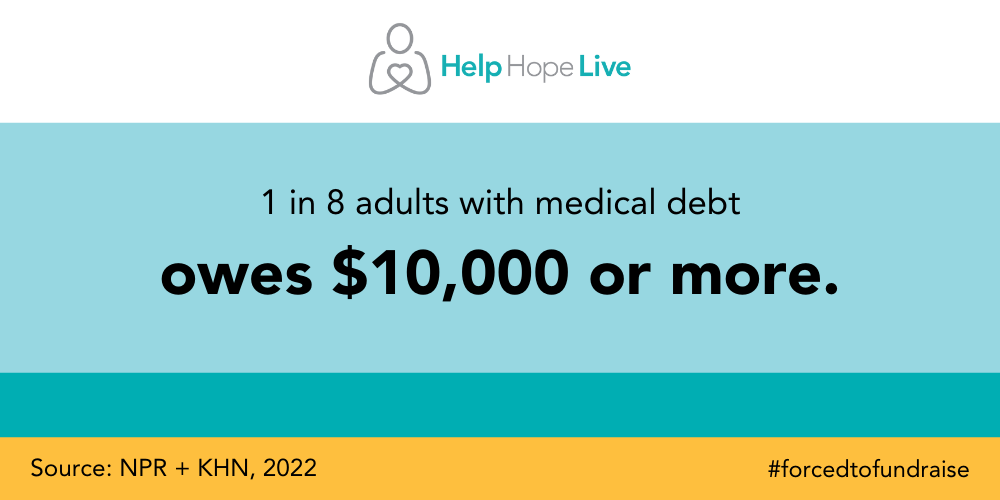
Most overdue bills are medical bills.
Medical bills represent 58% of the debts that have gone to collections—four times the next most common type of debt on credit reports.
Note: as of July 1, 2022, some kinds of medical debt will no longer appear on credit reports.
Medical debt is not confined to low-income or uninsured patients.
68% of U.S. adults making under $40,000 per year reported experiencing medical debt within the past five years. However, 45% of adults making over $90,000 per year reported the same challenges with medical debt. Uninsured patients are only 10% more likely to report medical debt than insured patients.
Researchers noted that even with legislation like the Affordable Care Act, many patients are still facing unreasonable out-of-pocket maximums of up to $8,700 through high-deductible insurance plans. Six in 10 working adults with insurance have faced medical debt within the past five years.
Medicare does not prevent medical debt, either: 37% of Medicare recipients cut their budgets for food or other basic necessities like clothing due to outstanding medical bills; 12% took on additional work to help make ends meet.
Illness is the single strongest predictor of medical debt—not income or insurance status.
Medical care costs are rising, not falling.
Within a 4-year period ending in 2016, medical care costs increased at almost four times the rate of inflation: they rose 16% from 2012 to 2016.
Medical debt is not primarily linked to older adults.
Despite the common misconception that older or post-retirement adults shoulder the highest medical bills, adults under 30 years old are twice as likely to have medical debt as adults 65 years old or older. Medical debt typically peaks for patients when they are in their late 20s or early 30s, not post-retirement, and patients who are between 30 and 49 years old have the highest medical debt.
Women and patients of color are the most likely to experience medical debt.
Women are more likely than men to report medical debt. Black adults are 50% more likely than white adults to experience medical debt, and Hispanic adults are 35% more likely than white adults to report medical debt.
Neighborhoods that have mostly non-white populations are almost four times more likely than mostly white neighborhoods to house citizens with medical debt.
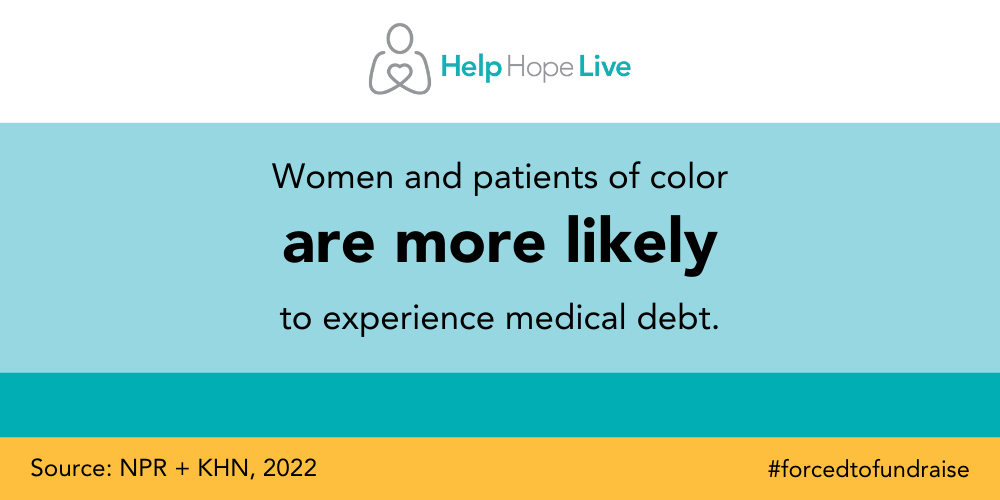
Medical debt forces us to give up things that keep us comfortable and safe.
“We have a health care system almost perfectly designed to create debt.”
63% of adults with medical debt have cut spending on food and other basics like clothing and48% have had to give up most or all of their savings, leaving them with no financial safety net for future needs.
40% of adults have had to work longer or harder, extending their workdays to make up for their financial deficit; 28% have delayed pursuing education or purchasing a home; 19% have been forced to change their living situation altogether to respond to their medical debt burden; and 17% have lost their home or declared bankruptcy.
Medical debt stops patients from accessing life-saving care.
Patients aren’t just choosing to forgo care because of the high associated medical costs: they are being prevented from accessing care due to their debts. One in 7 adults with medical debt has been denied care from a hospital, doctor, or other medical provider because of their unpaid medical bills.
Other patients forgo care to prevent incurring medical debt in the first place, putting their health at risk with every missed appointment and test.
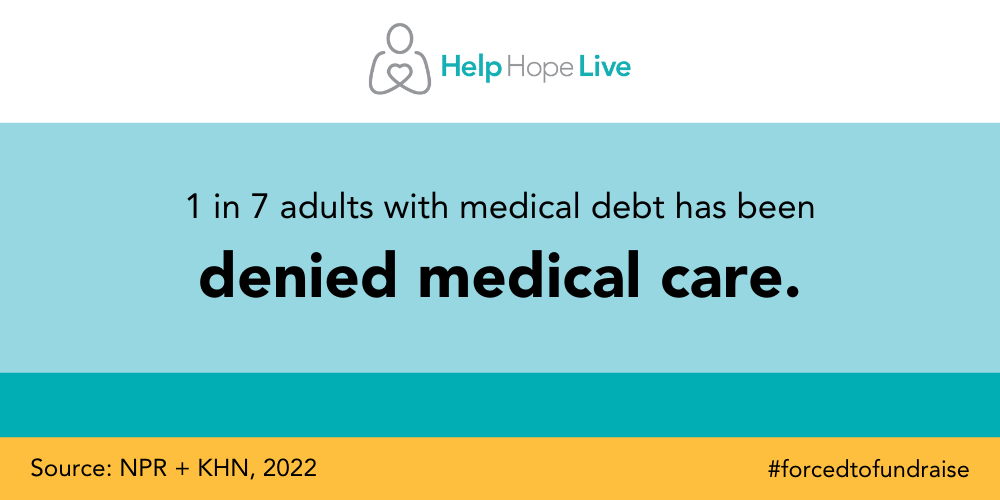
Medical debt makes us sicker.
Researchers noted that chronic medical debt can increase stress to toxic levels for a patient or family—slowing a patient’s recovery and even increasing their risk of death.
Forced to Fundraise
Every day, medical debt forces patients to seek aid from nonprofits like Help Hope Live.
One in 4 adults with medical debt has turned to a charity or nonprofit to get help with their overwhelming medical expenses. Patients are forced to fundraise on a daily basis because of this immense burden. As our Executive Director Kelly L. Green explains, at Help Hope Live:
“We believe health care is a human right. We help families facing a health care crisis to meet their medical needs, but ultimately, we want these families not to accumulate medical debt in the first place.”
Since 1983, Help Hope Live has been dedicated to lifting the financial burden for patient families through trusted medical fundraising. We’ve helped thousands of clients raise millions of dollars to pay medical bills, and we’re constantly expanding our services and resources to make help and hope available to more patients during times of overwhelming need.
If this coverage has moved you to care deeply about the burden of medical debt on patients and families, please make a donation to Help Hope Live today:
Are you or a loved one among the millions of patients facing overwhelming uninsured medical expenses? You are not alone. Submit a short application right now, and learn how we provide safer and more effective fundraising than crowdfunding platforms like GoFundMe:
Written by Emily Progin








